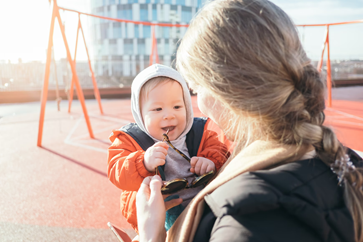8.6.5: Self-Regulation
- Page ID
- 140104
\( \newcommand{\vecs}[1]{\overset { \scriptstyle \rightharpoonup} {\mathbf{#1}} } \)
\( \newcommand{\vecd}[1]{\overset{-\!-\!\rightharpoonup}{\vphantom{a}\smash {#1}}} \)
\( \newcommand{\id}{\mathrm{id}}\) \( \newcommand{\Span}{\mathrm{span}}\)
( \newcommand{\kernel}{\mathrm{null}\,}\) \( \newcommand{\range}{\mathrm{range}\,}\)
\( \newcommand{\RealPart}{\mathrm{Re}}\) \( \newcommand{\ImaginaryPart}{\mathrm{Im}}\)
\( \newcommand{\Argument}{\mathrm{Arg}}\) \( \newcommand{\norm}[1]{\| #1 \|}\)
\( \newcommand{\inner}[2]{\langle #1, #2 \rangle}\)
\( \newcommand{\Span}{\mathrm{span}}\)
\( \newcommand{\id}{\mathrm{id}}\)
\( \newcommand{\Span}{\mathrm{span}}\)
\( \newcommand{\kernel}{\mathrm{null}\,}\)
\( \newcommand{\range}{\mathrm{range}\,}\)
\( \newcommand{\RealPart}{\mathrm{Re}}\)
\( \newcommand{\ImaginaryPart}{\mathrm{Im}}\)
\( \newcommand{\Argument}{\mathrm{Arg}}\)
\( \newcommand{\norm}[1]{\| #1 \|}\)
\( \newcommand{\inner}[2]{\langle #1, #2 \rangle}\)
\( \newcommand{\Span}{\mathrm{span}}\) \( \newcommand{\AA}{\unicode[.8,0]{x212B}}\)
\( \newcommand{\vectorA}[1]{\vec{#1}} % arrow\)
\( \newcommand{\vectorAt}[1]{\vec{\text{#1}}} % arrow\)
\( \newcommand{\vectorB}[1]{\overset { \scriptstyle \rightharpoonup} {\mathbf{#1}} } \)
\( \newcommand{\vectorC}[1]{\textbf{#1}} \)
\( \newcommand{\vectorD}[1]{\overrightarrow{#1}} \)
\( \newcommand{\vectorDt}[1]{\overrightarrow{\text{#1}}} \)
\( \newcommand{\vectE}[1]{\overset{-\!-\!\rightharpoonup}{\vphantom{a}\smash{\mathbf {#1}}}} \)
\( \newcommand{\vecs}[1]{\overset { \scriptstyle \rightharpoonup} {\mathbf{#1}} } \)
\( \newcommand{\vecd}[1]{\overset{-\!-\!\rightharpoonup}{\vphantom{a}\smash {#1}}} \)
Development of Self-Regulation
Infants have the ability to express themselves through vocalizations, facial expressions and movements of their body. For example, upon hearing a loud unexpected sound, an infant may close their eyes, tense their body and cry to express their internal state. However, while they can express themselves, infants have limited capacity for self-regulation. Self-regulation is the ability to control behavior and responses in adaptive ways across a variety of dimensions, including attention, emotion, behavior, and cognition (Calkins, 2007; Calkins & Fox, 2002). Self-regulation is a cornerstone of healthy development (Robson, Allen & Howard, 2020; Thompson, 2016) and has been linked to the development of language, mathematics, reading, and literacy skills (von Salisch et al., 2015; Bohlman & Downer, 2016; Lin et al., 2016). Consider the strategies you personally use for self-regulation. When you feel scared, anxious, unmotivated or distracted, what strategies have you discovered that help you regulate your internal state?

During infancy, the early beginning of self-regulation can be seen in infants’ responses to input from caregivers and the environment (Samdan et al., 2020). The ongoing development of motor skills, attention, and emotion subsequently influence the development of self-regulation abilities (Calkins, 2007), as infants and toddlers begin to recruit newly developed skills for self-regulating. Whereas a young infant relies upon the caregiver to distract them from an unfavorable experience, an older infant can control their eyes and/or head to purposefully look away and a toddler can use newly developed motor abilities to independently crawl or walk away. [2]
It is important to recognize that processes of self-regulation might differ across cultures (Jaramillo et al., 2017). The strategies an individual uses to modify their internal states and behaviors are immersed in a cultural context that gives priority to prevailing values and outcomes in the socialization process. In this way, caregivers shape an infant’s developing self-regulation skills and at the same time communicate culturally-appropriate socioemotional norms and expectations. As an example, two studies (Harwood et al., 1999; Carlson and Harwood, 2003) compared socialization goals and practices of European American and Puerto Rican toddler caregivers. In line with their socialization goals, European American caregivers preferred educational practices that gave children learning opportunities. They structured learning situations indirectly, as they used suggestions and verbal approvals to guide children to act in a certain way, while giving them much room to choose for themselves what to exactly do. Puerto Rican caregivers, instead, tended to use more authority to teach children the ways of acting, according to what they expected. They intervened physically more often (e.g., by physically moving children to do something), used more explicit signals to obtain children’s attention, and gave more direct orders than European American caregivers. [3]
Caregivers are instrumental in the development and maintenance of self-regulatory abilities among infants and toddlers. As they develop, infants transition from dependence on caregivers for help in self-regulating to more autonomous self-regulation. Let’s return to and provide more information about the scenario of the infant who hears a loud unexpected sound presented at the beginning of this topic. Eli, 3 months old, is a new child in the infant room at a child care center. Ms. Williams, his primary caregiver, learned from his family what techniques work best to calm Eli when he is upset. One day, a loud noise from the street suddenly wakes Eli and he starts to cry. Ms. Williams lifts him from his crib and holds him close, swaying from side to side until he relaxes and returns to sleep. [4] [5]
As infants have limited self-regulation abilities, the role of caregivers is essential. By responding to the infant in a way that meets their needs, the caregiver supports the infant’s emerging regulatory abilities. As the example from the scenario highlights, Eli was able to express his internal state, but he depended on his caregiver to help him regulate his internal state. Soothing by holding and rocking or by reorienting a child’s attention is a common practice for regulating distress. The caregiver’s regulating actions not only soothe the infant, but also demonstrate to the infant, culturally-appropriate strategies for self-regulation.
[1] Photo from Paul Hanaoka on Unsplash
[2] Schworer et al., (2021). Early regulatory skills and social communication development in infants with Down Syndrome. Brain Sciences, 11(2), 208. CC by 4.0
[3] Jaramillo et al., (2017). Children’s self-regulation in cultural contexts: The role of parental socialization theories, goals, and practices. Frontiers in Psychology, 8, 923. CC by 4.0
[4] “Emotional and Behavioral Self-Regulation” by Head Start ECLKC is in the public domain.
[5] Finlay-Jones et al., (2021). Caregiver-mediated interventions to support self-regulation among infants and young children (0–5 years): A protocol for a realist review. BMJ Open, 11(6), e046078. CC by 4.0 NC

